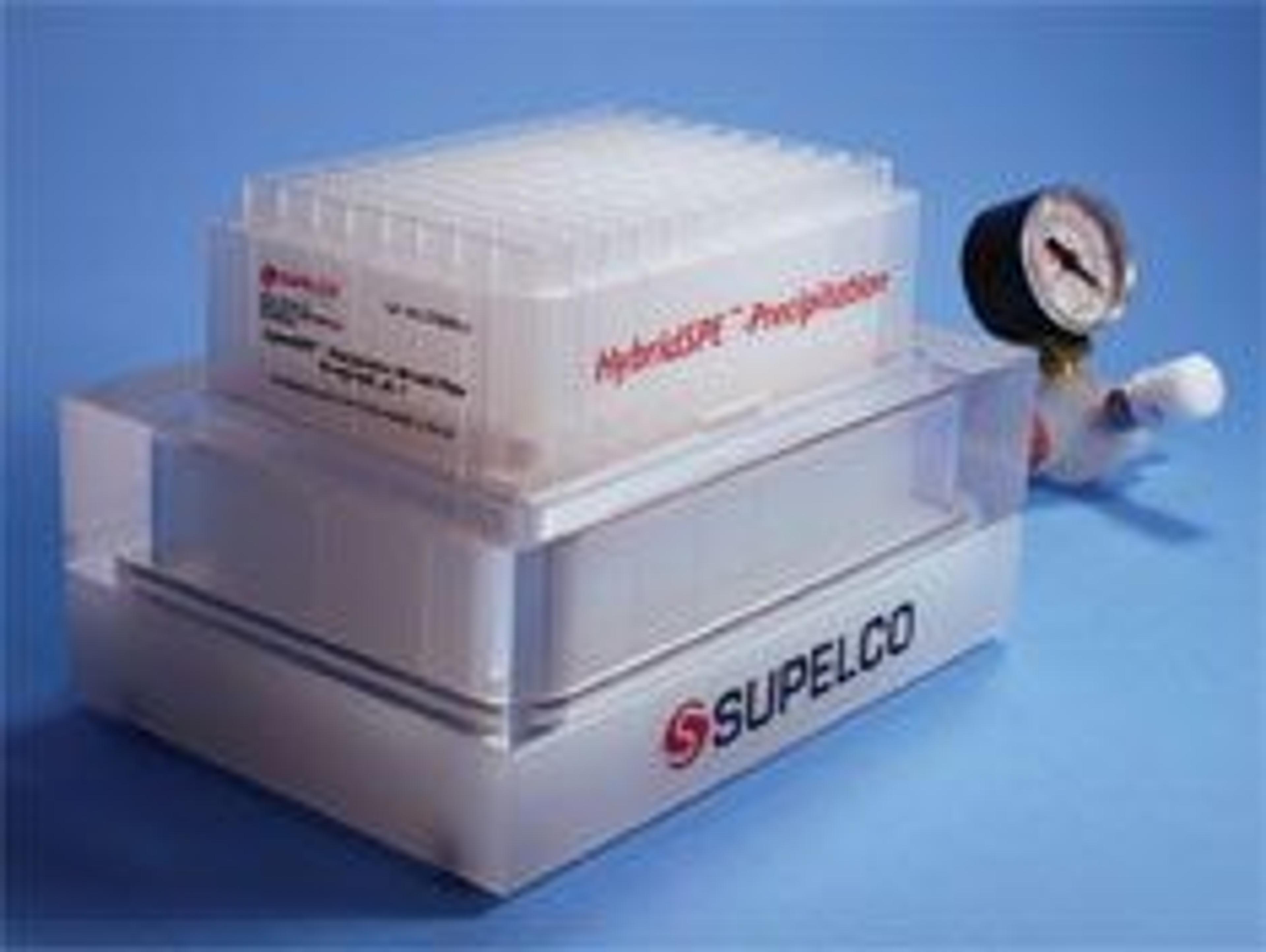Introducing HybridSPE™- Precipitation Technology from Sigma-Aldrich/Supelco
28 Aug 2008HybridSPE-Precipitation (HybridSPE-PPT) technology combines the simplicity of protein precipitation with the selectivity of SPE for the targeted removal of phospholipids and proteins from biological samples prior to LC-MS/MS analysis.
Supelco, a division of Sigma-Aldrich® Group, introduces a new patent pending sample prep platform, called HybridSPE-Precipitation (HybridSPE-PPT), which merges the two predominant techniques in bionanalytical sample prep: protein precipitation and SPE. The end result is a technique that offers the advantages of both approaches while minimizing their disadvantages.
In pharmaceutical bioanalysis, researchers develop and run various assays to quantitate drugs, pharmaceutical candidates, and their metabolites in biological fluids such as serum and plasma. The data resulting from these assays are used to help determine the pharmacodynamic and pharmacokinetic properties as well as the toxic and therapeutic concentrations of existing and emerging pharmaceutical compounds in living cells, tissues, and animals.
Excessive background from endogenous matrix components has always been a great concern in quantitative bioanalysis, and has become paramount with the need for reduced analytical run times. In bioanalytical mass spectrometry, the issue of excessive background contributes to the growing problem of ion-suppression.
One of the major causes of ion-suppression in bioanalysis is the presence of phospholipids during LC-MS or LC-MS-MS analysis in the positive ion electrospray mode (+ESI). Phospholipids are the second largest lipid component in biological matrices after triglycerides, and are typically present in extremely high concentrations in plasma samples.
HybridSPE-PPT technology is a simple and generic sample prep platform designed for the gross level removal of endogenous protein and phospholipid interferences from biological plasma and serum prior to LC-MS or LC-MS/MS analysis. Biological plasma or serum is first subjected to protein precipitation via the addition and mixing of acidified (with formic acid) acetonitrile. Precipitated proteins are then removed by centrifugation and the resulting supernatant is loaded on the HybridSPE 96-well plate or cartridge which acts as a chemical filter that specifically targets the removal of endogenous sample phospholipids. The 96-well version contains a series of low porosity hydrophobic filters/frits; the packed-bed filter/frit assembly acts as a depth filter facilitating the concurrent removal of both phospholipids and precipitated proteins during the extraction process. The phospholipid retention mechanism is based on a highly selective Lewis acid-base interaction between the proprietary zirconia ions functionally bonded to the HybridSPE stationary phase and the phosphate moiety consistent with all phospholipids. The resulting eluate is ready for immediate LC-MS or LC-MS/MS analysis.

